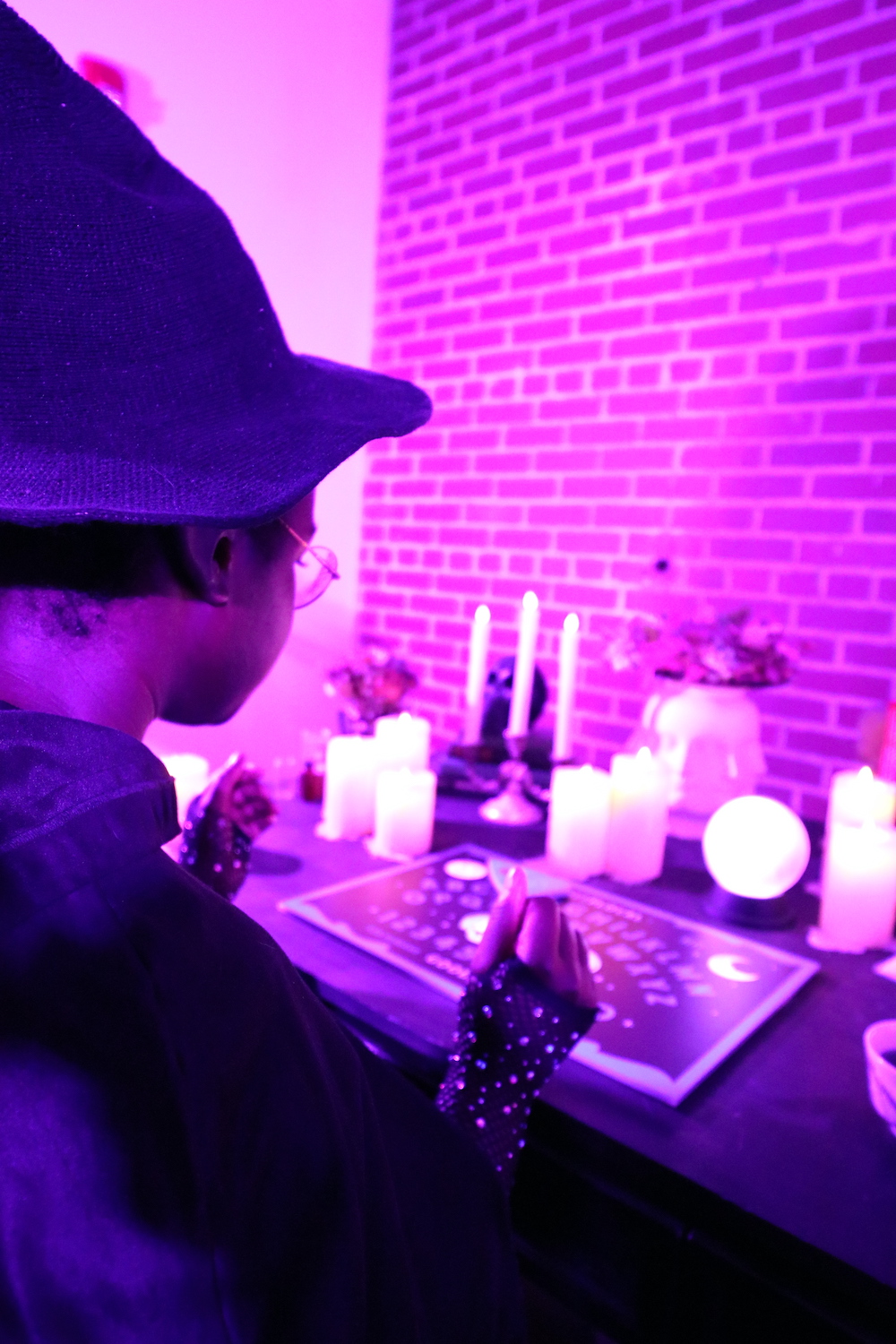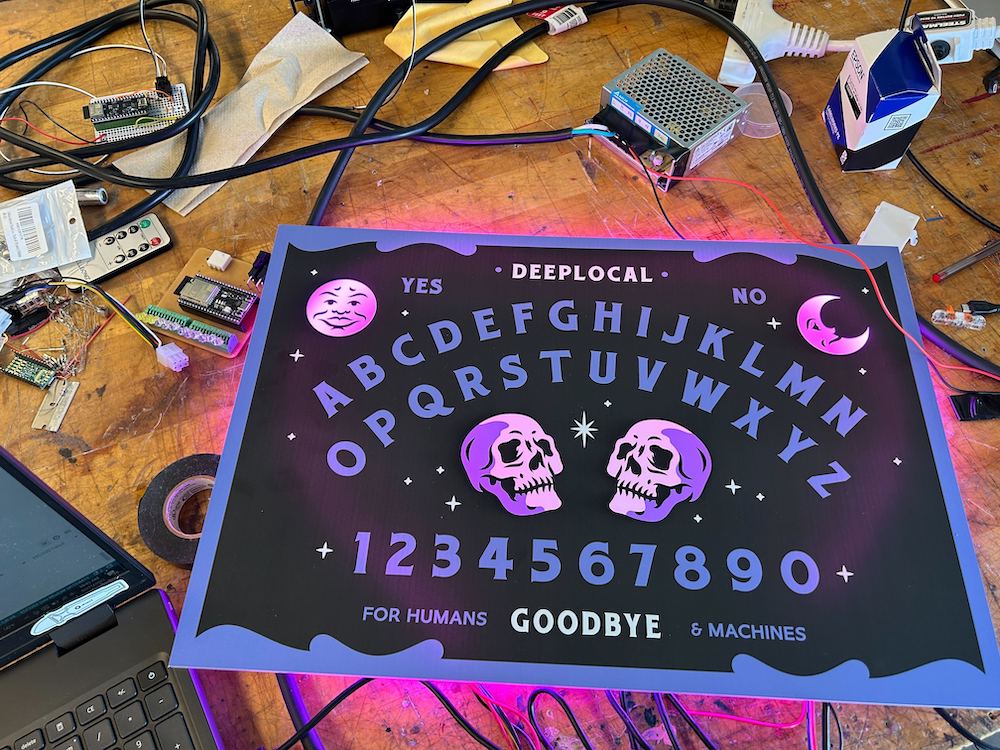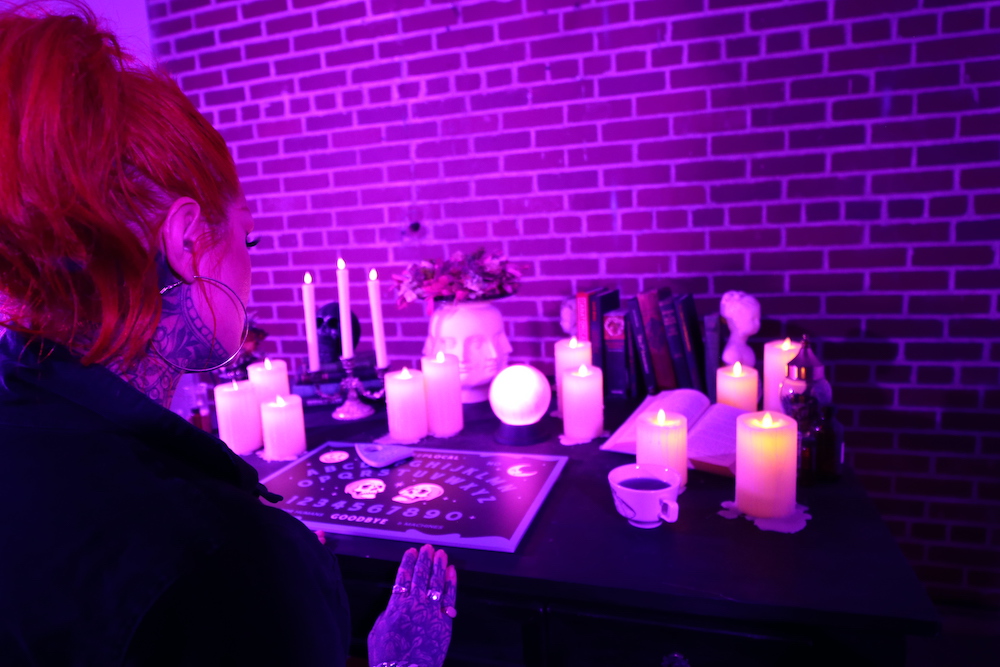Although at first glance, those words might seem like part of a “one of these things is not like the other” game, believe it or not, these are all things artificial intelligence can be used for.
At Sharpsburg’s Deeplocal, art and technology often collide, this year to celebrate the spookiest time of year the creative technology and experience design company decided it’d be fun to give the Ouija board an upgrade, without the risk of living out any horror movie scenarios.
Meet the Séance Bot, an AI-powered, autonomous spirit board that allows users to interact with some of the most famous monsters in the world. Watch it move on Deeplocal’s Instagram.
For better or worse, AI has been a hot topic in the tech industry throughout the year, so the company’s leadership decided that for Halloween, it’d be fun to use technology to inject a little magic into the season. Deeplocal Creative Technology Director Sean Scanlan told Technical.ly via email that AI is a form of technology that makes real-world experiences feel magical. During a time of year when a lot of people have the spirit world on the brain, he said, it was the perfect time for a spirit board that appears to have a mind of its own.

“We were also inspired by séances and how communicating with spirits is a lot like communicating with AI,” Scanlan said. “You can’t see the entity that has access to unimaginable amounts of information. And, you can’t always trust the information that’s given to you.”
When someone uses the Séance Bot, they’re presented with a glowing Ouija board and a planchette that appears to move on its own in response to the users’ questions. In response to being asked questions about their likes and dislikes, the planchette moves around the board to answer the way a character would. The user could be communicating with any number of figures from fiction, urban legends and history.
“Right now there are a lot of moral and ethical ambiguities and questions about using AI to ‘communicate’ with real people who have passed away,” Scanlan said. “Because of these questions, we decided to keep the experience light and fun by only using fictional characters.”

It took two creative technologists, a mechanical designer, an experience designer, an integration engineer, and a host of other interns and apprentices to take the technology from an idea to a reality. Characters such as Frankenstein’s Monster, Dracula, the Mummy and the Wolf Man get their personalities by combining the use of large language models with the traditional Ouija board factors. When the Séance Bot’s development began in September, the technologists involved trained an LLM to embody the personality of whichever Halloween character has been summoned.
“‘Hello’ activates the Séance Bot, which then randomly ‘summons’ a character. Using voice-to-text technology, users ask questions,” Scanlan wrote. “Inside the table, an internally housed AxiDraw machine glides the planchette (using magnets) to spell out the responses letter by letter. And of course, users say ‘Goodbye’ to end the session.”

For the time being, the only people Scanlan imagines will be using Séance Bot are other Deeplocal employees. Yet the company is open to building on the technology in the future with any clients whose brand aligns with Halloween or the occult. In the meantime, the team involved feels a sense of pride that they were able to finish a project they hope will be a source of fun, and to kickstart conversations about artificial intelligence.
“While so much of our lives is pushed online and experienced in front of screens, real-life, physical experiences are highly engaging and emotionally evocative,” Scanlan said. “We hope marketers who see the project are inspired to imagine how their brand manifests itself and shows up physically, and think about how this creates a valuable dialogue with audiences.”







